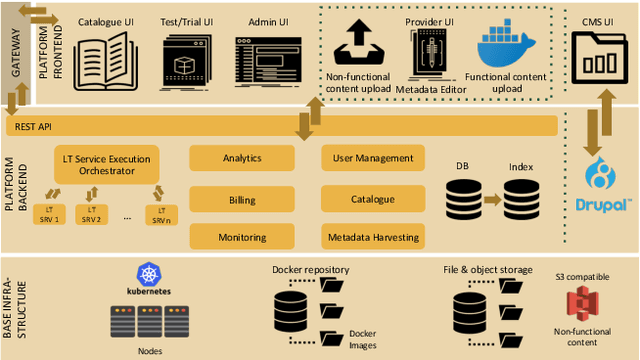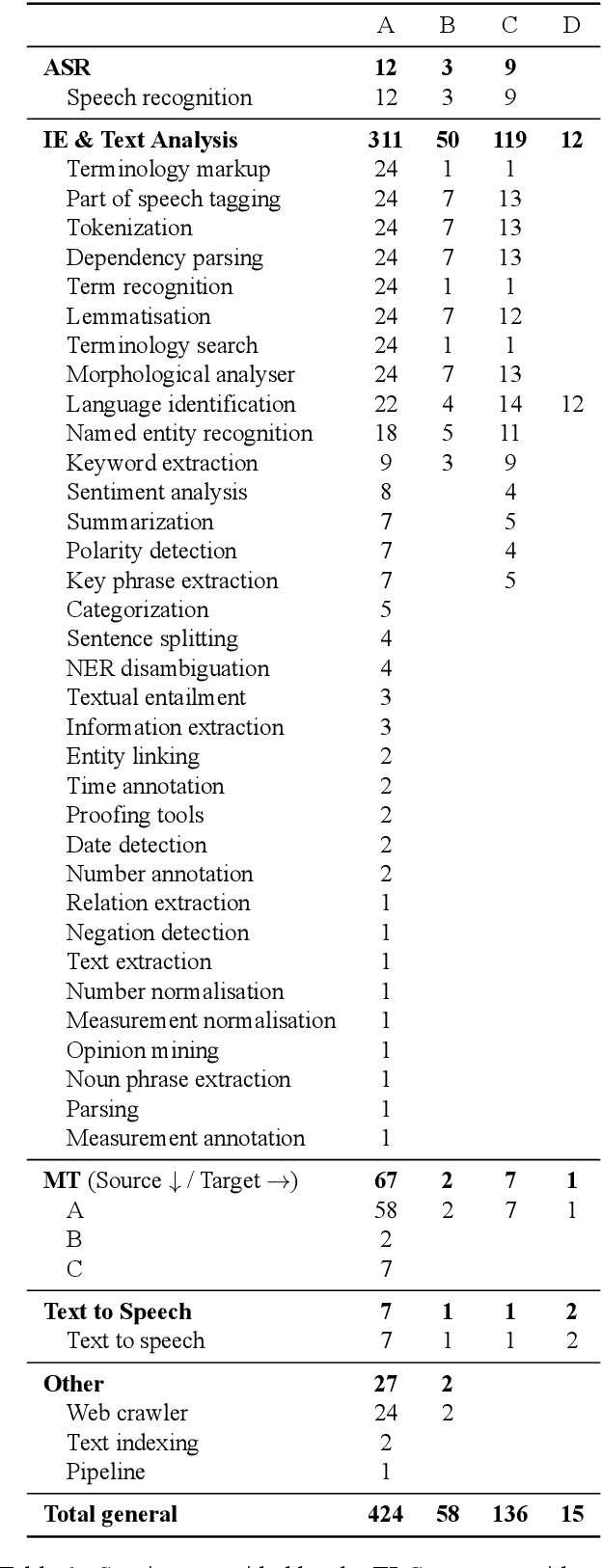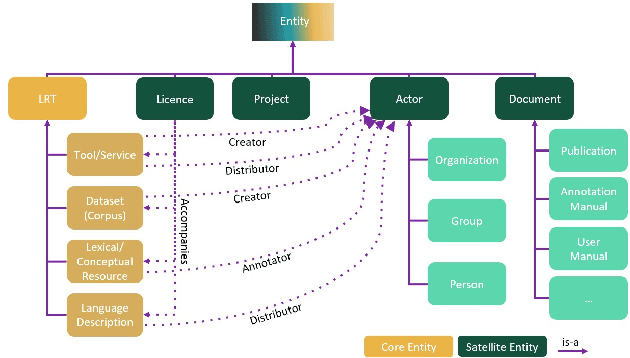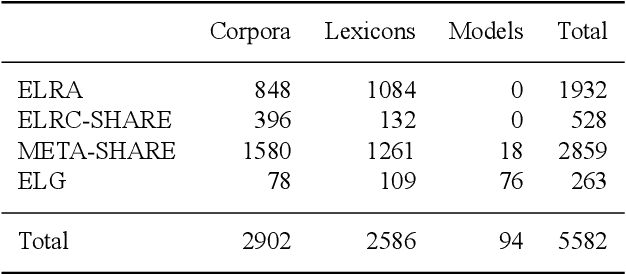Victoria Arranz
European Language Grid: An Overview
Mar 30, 2020



Abstract:With 24 official EU and many additional languages, multilingualism in Europe and an inclusive Digital Single Market can only be enabled through Language Technologies (LTs). European LT business is dominated by hundreds of SMEs and a few large players. Many are world-class, with technologies that outperform the global players. However, European LT business is also fragmented, by nation states, languages, verticals and sectors, significantly holding back its impact. The European Language Grid (ELG) project addresses this fragmentation by establishing the ELG as the primary platform for LT in Europe. The ELG is a scalable cloud platform, providing, in an easy-to-integrate way, access to hundreds of commercial and non-commercial LTs for all European languages, including running tools and services as well as data sets and resources. Once fully operational, it will enable the commercial and non-commercial European LT community to deposit and upload their technologies and data sets into the ELG, to deploy them through the grid, and to connect with other resources. The ELG will boost the Multilingual Digital Single Market towards a thriving European LT community, creating new jobs and opportunities. Furthermore, the ELG project organises two open calls for up to 20 pilot projects. It also sets up 32 National Competence Centres (NCCs) and the European LT Council (LTC) for outreach and coordination purposes.
Making Metadata Fit for Next Generation Language Technology Platforms: The Metadata Schema of the European Language Grid
Mar 30, 2020



Abstract:The current scientific and technological landscape is characterised by the increasing availability of data resources and processing tools and services. In this setting, metadata have emerged as a key factor facilitating management, sharing and usage of such digital assets. In this paper we present ELG-SHARE, a rich metadata schema catering for the description of Language Resources and Technologies (processing and generation services and tools, models, corpora, term lists, etc.), as well as related entities (e.g., organizations, projects, supporting documents, etc.). The schema powers the European Language Grid platform that aims to be the primary hub and marketplace for industry-relevant Language Technology in Europe. ELG-SHARE has been based on various metadata schemas, vocabularies, and ontologies, as well as related recommendations and guidelines.
Mining and Exploiting Domain-Specific Corpora in the PANACEA Platform
Mar 08, 2013Abstract:The objective of the PANACEA ICT-2007.2.2 EU project is to build a platform that automates the stages involved in the acquisition, production, updating and maintenance of the large language resources required by, among others, MT systems. The development of a Corpus Acquisition Component (CAC) for extracting monolingual and bilingual data from the web is one of the most innovative building blocks of PANACEA. The CAC, which is the first stage in the PANACEA pipeline for building Language Resources, adopts an efficient and distributed methodology to crawl for web documents with rich textual content in specific languages and predefined domains. The CAC includes modules that can acquire parallel data from sites with in-domain content available in more than one language. In order to extrinsically evaluate the CAC methodology, we have conducted several experiments that used crawled parallel corpora for the identification and extraction of parallel sentences using sentence alignment. The corpora were then successfully used for domain adaptation of Machine Translation Systems.
* 3 pages. Also available in UPF institutional repository (http://hdl.handle.net/10230/20416)
 Add to Chrome
Add to Chrome Add to Firefox
Add to Firefox Add to Edge
Add to Edge